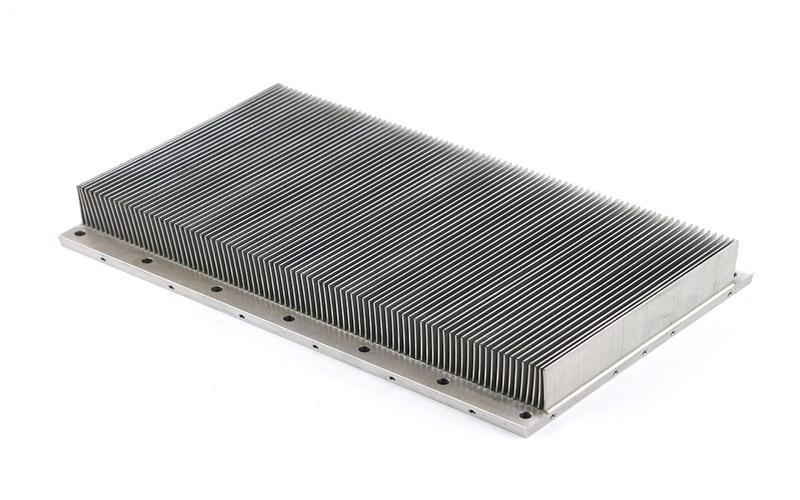Understanding the Significance of custom heat sinks in Electronic Devices
When it comes to electronic devices, one crucial component that often goes unnoticed is the heat sink. Custom heat sinks play a vital role in maintaining the temperature of various electronic components, ensuring their optimal performance and longevity. In this article, we will explore the different aspects of custom heat sinks and how they contribute to the efficient functioning of electronic devices.
The Basics of Custom Heat Sinks
Before delving into the intricacies of custom heat sinks, it is essential to understand their basic functionality. A heat sink is a passive device that dissipates heat generated by electronic components, such as transistors, microprocessors, and power modules. It transfers the excess heat away from the component and disperses it into the surrounding environment, preventing overheating and potential damage.
Custom heat sinks are specifically designed to meet the unique requirements of different electronic devices. They are tailored to fit specific dimensions, shapes, and materials, ensuring maximum heat dissipation and compatibility with the device they are intended for.
The Role of Custom Heat Sinks in Heat Dissipation
One of the primary functions of custom heat sinks is heat dissipation. As electronic components operate, they generate heat due to the resistance and power consumption within the circuitry. Without proper heat dissipation, this excess heat can accumulate and cause the components to overheat, leading to performance degradation or even failure.
Custom heat sinks provide an efficient cooling solution by utilizing various heat transfer mechanisms, such as conduction, convection, and radiation. These heat sinks are designed with fins or ridges that increase the surface area, allowing for better heat dissipation. They also employ materials with high thermal conductivity, such as aluminum or copper, to facilitate the transfer of heat away from the electronic components.
The Importance of Customization for Optimal Performance
Every electronic device has unique heat dissipation requirements based on factors like power consumption, operating environment, and size constraints. Off-the-shelf heat sinks may not always meet these specific needs, making customization crucial for optimal performance.
Custom heat sinks are designed to cater to the specific thermal requirements of electronic devices. By considering factors like component layout, airflow, and power dissipation, manufacturers can create a heat sink that is perfectly tailored to the device's needs. This customization ensures efficient heat dissipation, preventing overheating and maintaining the device's performance at its peak.
Factors Influencing Custom Heat Sink Design
Designing a custom heat sink involves considering various factors to achieve the desired cooling performance. Some of the key factors that influence custom heat sink design include:
1. Thermal resistance:
Thermal resistance refers to the resistance a heat sink offers to the transfer of heat. Lower thermal resistance allows for better heat dissipation. Custom heat sinks are designed to minimize thermal resistance and maximize cooling efficiency.
2. Fin design:
The design of fins on a heat sink greatly impacts its cooling performance. Factors such as fin thickness, spacing, and shape play a crucial role in determining the heat sink's ability to dissipate heat effectively. Custom heat sinks are designed with optimized fin designs to enhance cooling performance.
3. Material selection:
The choice of material for a custom heat sink is vital as it directly affects its thermal conductivity and overall performance. Aluminum and copper are commonly used materials due to their excellent thermal properties. The selection of the material is based on factors like cost, weight, and thermal conductivity requirements.
4. Airflow management:
Efficient airflow is essential for proper heat dissipation. Custom heat sinks take into account the device's layout and airflow conditions to ensure optimal cooling. They may incorporate features like heat pipes, fans, or other cooling mechanisms to enhance airflow and dissipate heat more effectively.
Applications of Custom Heat Sinks
Custom heat sinks find applications in a wide range of electronic devices, including:
1. Computers and Servers:
Custom heat sinks are extensively used in computer CPUs, graphics cards, and servers to prevent overheating and maintain optimal performance during intensive tasks like gaming or data processing.
2. LED Lighting:
LEDs generate heat during operation, and custom heat sinks are employed to dissipate this heat, ensuring the longevity and efficiency of the lighting fixtures.
3. Power Electronics:
In power electronics applications such as inverters, converters, and motor drives, custom heat sinks play a crucial role in dissipating heat generated by high-power components.
4. Automotive Electronics:
In modern vehicles, custom heat sinks are used to cool electronic components like power modules, motor controllers, and LED headlights, preventing overheating and ensuring reliable performance.
The Future of Custom Heat Sinks
As electronic devices continue to evolve and become more powerful, the demand for efficient heat dissipation solutions will only increase. Custom heat sinks will play a vital role in meeting these demands by offering tailored cooling solutions for advanced electronic devices.
New technologies, such as liquid cooling and advanced materials, are already being incorporated into custom heat sink designs to enhance their cooling capabilities. These advancements will enable the development of smaller, more efficient, and higher-performing electronic devices in the future.

